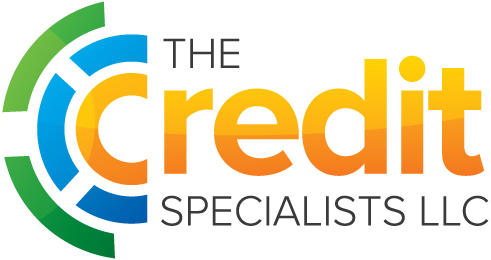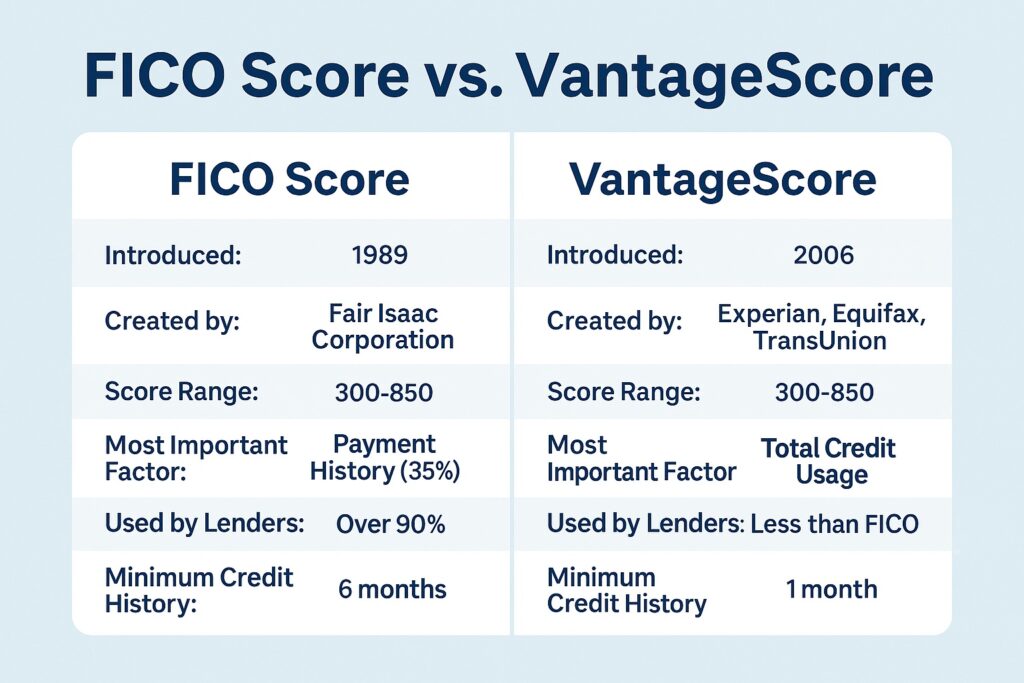Not all credit scores are the same. In fact, two of the most common models—FICO and VantageScore—calculate credit in different ways. As a result, your score may vary depending on which one a lender uses. Understanding the differences between FICO and VantageScore is essential if you want to improve your credit and qualify for the best financial opportunities.
👉 Related: How Credit Scores Affect Loan Approvals | The Credit Specialists
What Is a FICO Score?
The FICO Score was created in 1989 by the Fair Isaac Corporation. It’s the most widely used credit scoring model, with 90% of top lenders relying on it when making decisions.
FICO scores range from 300 to 850 and are based on:
Payment history (35%)
Credit utilization (30%)
Length of credit history (15%)
New credit inquiries (10%)
Credit mix (10%)
💡 Tip: Because payment history and utilization make up 65% of your score, paying bills on time and keeping balances low are the fastest ways to improve your FICO score.
What Is a VantageScore?
The VantageScore was developed in 2006 by the three major credit bureaus—Experian, Equifax, and TransUnion. While less common than FICO, it’s gaining popularity with online lenders, credit monitoring services, and some banks.
Like FICO, VantageScore ranges from 300 to 850 but weighs factors differently:
Payment history (40%)
Credit utilization (20%)
Credit age and mix (20%)
New credit (11%)
Other factors (9%)
👉 External Reference: Consumer Financial Protection Bureau (CFPB) Guide on Credit Scores.
Key Differences Between FICO and VantageScore
Although both models use similar data, they differ in how they calculate your score:
Minimum Credit History
FICO requires at least 6 months of credit history.
VantageScore can generate a score with just 1 month of history.
Weighting of Factors
FICO prioritizes payment history (35%) and utilization (30%).
VantageScore gives more weight to payment history (40%) and credit mix.
Use by Lenders
FICO is dominant in lending decisions (mortgages, car loans, credit cards).
VantageScore is often used for educational purposes and free credit apps.
Which Score Matters More?
Both scores matter, but lenders are more likely to use FICO. However, knowing both can help you prepare for any application. If your VantageScore is significantly different from your FICO, focus on the shared factors like on-time payments and keeping balances low.
👉 Related: 5 Credit Repair Myths You Must Stop Believing Today
How to Improve Your Score Regardless of the Model
No matter which score lenders check, the same habits will help:
Pay all bills on time (set up autopay if needed).
Keep balances under 30% of your credit limit.
Avoid multiple applications in a short period.
Review your credit report regularly and dispute errors.
Keep older accounts open to build history.
Final Thoughts
FICO and VantageScore may calculate credit differently, but both play a major role in your financial life. By focusing on healthy credit habits, you’ll improve your chances of loan approval, lower interest rates, and greater financial stability.
📞 Call The Credit Specialists today at 915-302-2525
🌐 Start now: https://subscribepage.io/AOMFtc


